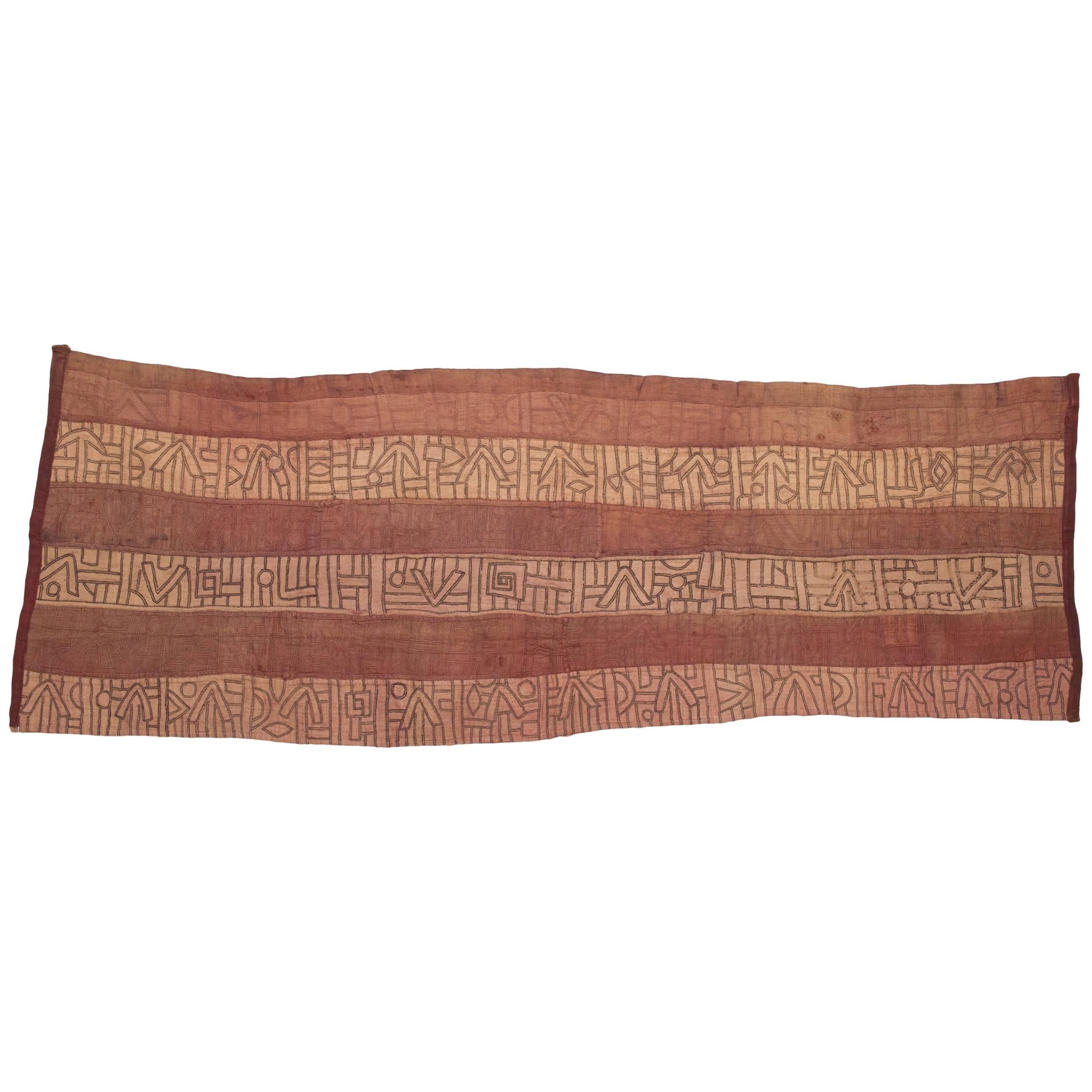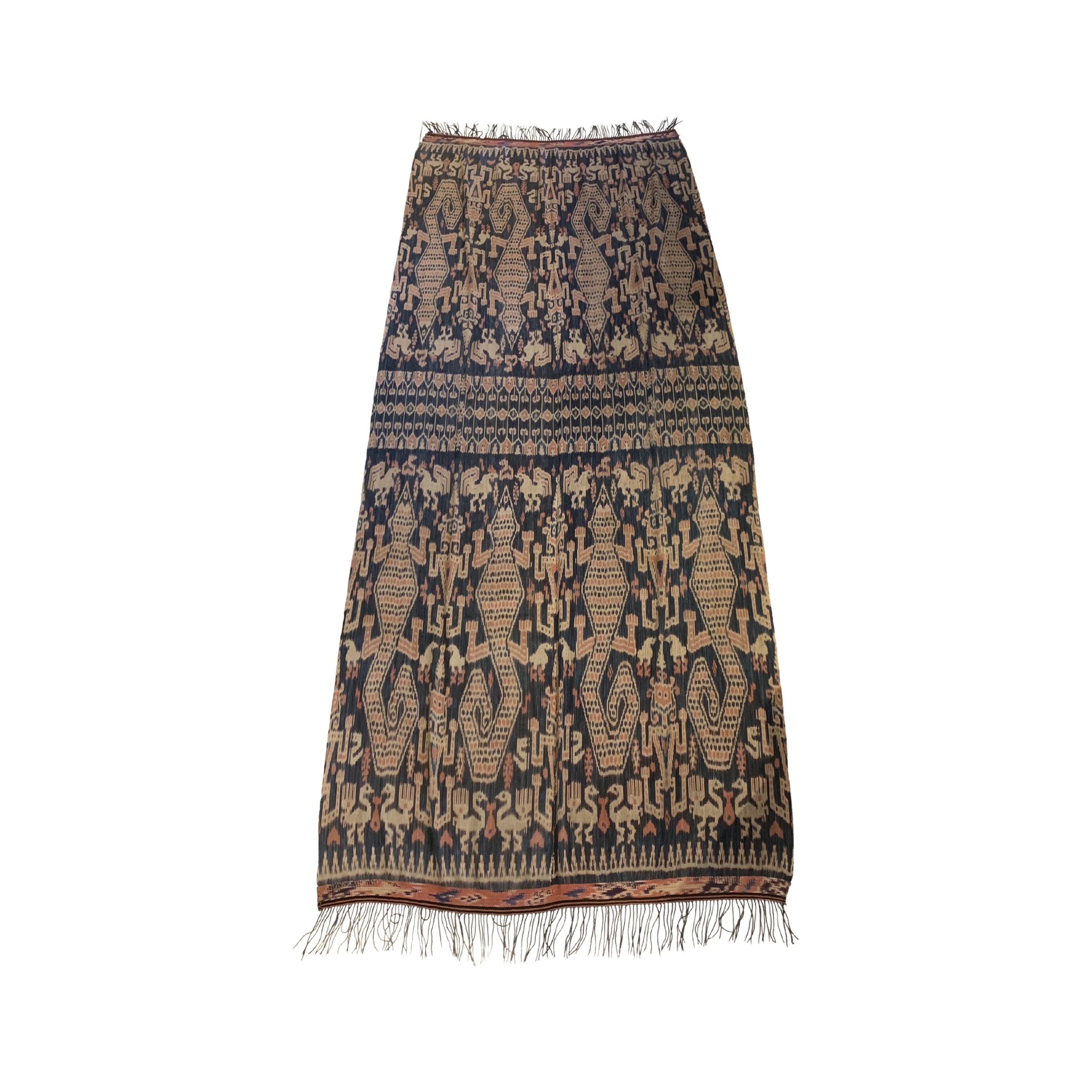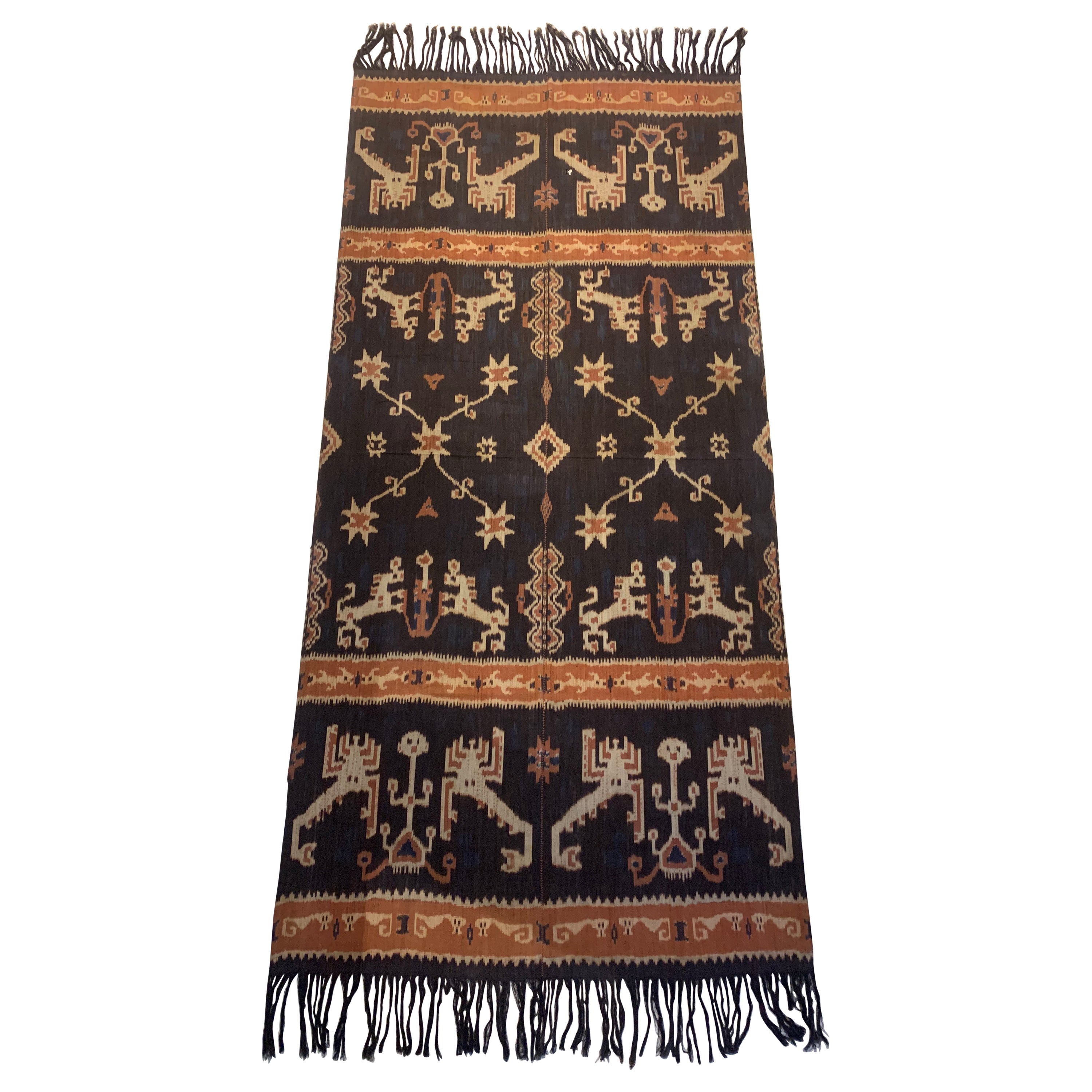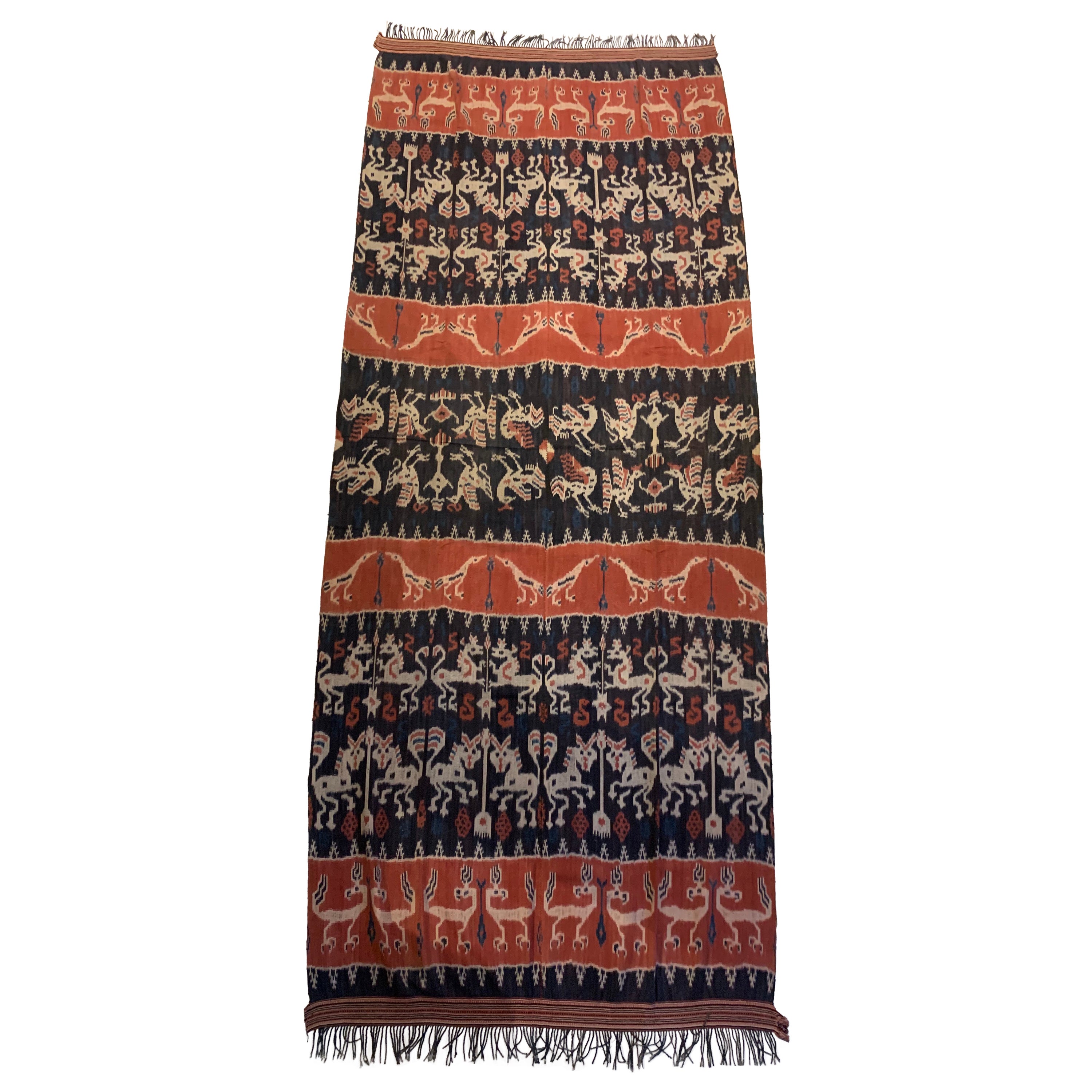Items Similar to Woven African Tribal Bogalan Mud Cloth Textile
Want more images or videos?
Request additional images or videos from the seller
1 of 8
Woven African Tribal Bogalan Mud Cloth Textile
About the Item
Handwoven Bogolan mud cloth textile from Mali, Africa, Bambara.
It is a handwoven tribal cotton fabric traditionally dyed with fermented mud.
Woven African textile, with geometric tribal designs, earth colors in browns.
100% organic cotton.
Long and narrow.
10 yards x 45" wide.
- Dimensions:Height: 360 in (914.4 cm)Width: 45 in (114.3 cm)Depth: 0.01 in (0.26 mm)
- Style:Folk Art (In the Style Of)
- Materials and Techniques:Cotton,Hand-Woven
- Place of Origin:
- Period:
- Date of Manufacture:20th Century
- Condition:Wear consistent with age and use.
- Seller Location:North Hollywood, CA
- Reference Number:
About the Seller
5.0
Platinum Seller
These expertly vetted sellers are 1stDibs' most experienced sellers and are rated highest by our customers.
1stDibs seller since 2011
2,622 sales on 1stDibs
Typical response time: 1 hour
- ShippingRetrieving quote...Ships From: North Hollywood, CA
- Return PolicyA return for this item may be initiated within 7 days of delivery.
More From This SellerView All
- Vintage Samarkand Suzani, Uzbekistan Embroidered Textile Red and BlackLocated in North Hollywood, CAVintage Samarkand Suzani, Uzbekistan embroidered textile red and black Tashkent Suzani from Samarkand Uzbekistan, 1950. Overall good condition for its age and use some stains. "Suzani" means needlework and these embroideries are some of the most characteristic forms of textile art from Central Asia. The mastery of color and the dynamic sense of movement they convey continue to add depth and joy to contemporary interiors. A high level of creative variation and the individuation of each flower are what make each piece unique. Measures: 67.5" x 57". The Silk Road Bukhara: Like scattered pearls along the vast expanse of the Great Silk Road, the cities of Uzbekistan glisten radiantly under the unforgiving sun. This nation, nestled in a picturesque oasis, holds a treasure trove of historical artifacts, owing to its advantageous position at the heart of the ancient Silk Road network. In the year 138 BC, a transformative era commenced as China graciously opened its borders to trade, giving rise to caravans that embarked upon this illustrious route. These trading pathways served as conduits not only for the exchange of goods and craftsmanship but also for the intermingling of cultures, beliefs, and wisdom. Even today, within the ancient walls of cities like Samarkand, one can still discern the echoes of bustling voices, the melodious jingle of camel harnesses...Category
Early 20th Century Turkish Folk Art Textiles
MaterialsFabric
- 1940s Moroccan Tribal Rug African Ethnic Textile Floor CoveringBy Berber Tribes of MoroccoLocated in North Hollywood, CA1940s Moroccan Tribal Rug African Ethnic Textile Floor Covering. Vintage semi antique, Moroccan tribal rug, nomadic African Tuareg rug, wool and cotto...Category
Vintage 1950s Moroccan Folk Art Moroccan and North African Rugs
MaterialsWool, Cotton
- African Batik Cloth Natural Hand-woven Hand-Printed Cotton Fabric Ghana 10 YardsLocated in North Hollywood, CAAfrican Batik Cloth Natural Hand-woven Hand-Printed Cotton Fabric Ghana 10 yards. Colors are organic earth tone beige and light brown in geometric design. Non waxed fabric circa 1950s. Hand made in Ghana Africa. Museum Quality Original Long Piece. 380 inches, (30 ft 10 yards Long) x 46 inches Inches Wide( 4ft). Could be use to make pillows or upholstery. History of Batik in Africa: Batik, a traditional fabric art technique, has a rich history in Ghana, West Africa. The practice of batik involves using wax to create intricate patterns on fabric, which is then dyed to achieve the desired design. While batik has its origins in Asia, particularly in Indonesia, it has been embraced and adapted by various African countries, including Ghana. In Ghana, batik-making can be traced back to the mid-20th century when it gained popularity as a form of traditional textile art. The craft was introduced by artists and artisans who were inspired by the vibrant and expressive nature of batik. These early practitioners experimented with different designs, colors, and patterns, infusing local themes and motifs into their creations. Over time, batik became an important part of Ghanaian culture and identity. It is not only used for clothing but also for various decorative and functional items such as wall hangings, tablecloths, and accessories. The art form often reflects the rich cultural heritage of Ghana, incorporating symbols, proverbs, and traditional stories into the designs. Ghanaian batik artists often employ a combination of traditional and contemporary elements, creating a unique fusion of styles. The process of making batik involves applying hot wax to the fabric using various tools to create the desired patterns. The wax acts as a resist, preventing dye from penetrating the waxed areas. After dyeing, the wax is removed, revealing the intricate designs on the fabric. Today, batik-making in Ghana continues to thrive as both a traditional craft and a form of artistic expression. Many artisans and designers draw inspiration from Ghana's diverse cultural landscape, incorporating elements from different regions and ethnic groups into their batik creations. The art form has also gained international recognition, with Ghanaian batik products being sought after both locally and abroad. In summary, the history of batik in Ghana is a testament to the creativity and adaptability of artists who have embraced and transformed this traditional technique into a vibrant and culturally significant art form within the country. HISTORY OF BATIK In the mid-nineteenth century, the Belanda Hitam, or "Black Dutchmen," are said to have introduced batik to West Africa after serving as indentured soldiers for the Dutch in Indonesia. Returning from their conscriptions with trunks of fine Javanese batik, the opulent patterns captured the imagination of their friends and relatives. However, textile history is complex, and only a handful of recruits returned to West Africa with batik due to delayed payments. Batik, with roots traced to Egyptian mummies, is a tradition found globally, from Southeast Asia to Japan and India. Europeans, particularly the Dutch, played a significant role in industrializing batik from the seventeenth century onward. In West Africa, Dutch Scholar Ineke van Kessel suggests that batik arrived from India over trans-Saharan routes. Local populations, like the Yoruba in Nigeria, incorporated wax printing into their textiles. European traders brought wax and non-wax fabrics to West Africa in the seventeenth century, targeting a population ready for their consumption. European designers adapted prints for the African market...Category
Mid-20th Century Ghanaian Folk Art Textiles
MaterialsCotton
- Vintage Hand Painted Floral Batik from Sidoarjo East JavaLocated in North Hollywood, CAHand Drawn Indonesian Batik with Floral Design, Made in Indonesia, Full Batik Tulis Madura, Indonesian Batik Fabric. A beautiful, vintage hand made Batik ...Category
Mid-20th Century Indonesian Folk Art Textiles
MaterialsCotton
- African Moroccan Tribal Tuareg Khoumya Leather DaggerBy Berber Tribes of MoroccoLocated in North Hollywood, CAAfrican Moroccan Tuareg tribal Khoumya arm dagger in dark brown leather sheath. Handcrafted by Artisans in south Morocco, very fine quality craftsmanship with a stamped leather engraved with Moroccan Tuareg geometric tribal designs. The arm dagger was a weapon widely used by people across Africa in the Sahara and Sudanic Africa, from the central Sahara to North Cameroon, from Nigeria to Somalia. It was worn in a sheath attached to the inner side of the left forearm by a loop, Metal steel blade shows some rust, leather in very good condition. Size: 13 inches length x widest part 1.5 inches. Blade is 1inch. Africa, Morocco circa 1940s. Great Islamic antique Nomadic Tuareg knife dagger...Category
Mid-20th Century Moroccan Folk Art Arms, Armor and Weapons
MaterialsMetal
- Moroccan African Tribal Throw Kilim PillowBy Berber Tribes of MoroccoLocated in North Hollywood, CAMoroccan Berber handwoven tribal throw pillow made from a vintage rug. The front and the back are made from a different rug, front is more elabor...Category
20th Century Moroccan Folk Art Pillows and Throws
MaterialsWool
You May Also Like
- African Textile by Kuba, Zaire - for Backrest CoverLocated in Alessandria, PiemonteB/874/1 - Vintage African Kuba textile, suitable for Wall hanging or table - An IDEA: use this item as backrest covering of a sofa !Category
Mid-20th Century Congolese Folk Art Tribal Art
MaterialsRaffia, Cotton
- Ikat Textile from Sumba Island Tribal Motifs, IndonesiaLocated in Jimbaran, BaliThis Ikat textile originates from the Island of Sumba, Indonesia. It is hand-woven using naturally dyed yarns via a method passed on through generations. It features a stunning array...Category
Vintage 1950s Indonesian Other Textiles
MaterialsYarn
- Ikat Textile from Sumba Island Tribal Motifs, IndonesiaLocated in Jimbaran, BaliThis Ikat textile originates from the Island of Sumba, Indonesia. It is hand-woven using naturally dyed yarns via a method passed on through generations. It features a stunning array...Category
Vintage 1950s Indonesian Other Textiles
MaterialsYarn
- Ikat Textile from Sumba Island Stunning Tribal Motifs, IndonesiaLocated in Jimbaran, BaliThis Ikat textile originates from the Island of Sumba, Indonesia. It is hand-woven using naturally dyed yarns via a method passed on through generations. It features a stunning array...Category
Vintage 1950s Indonesian Other Textiles
MaterialsYarn
- Ikat Textile from Sumba Island Stunning Tribal Motifs, IndonesiaLocated in Jimbaran, BaliThis Ikat textile originates from the Island of Sumba, Indonesia. It is hand-woven using naturally dyed yarns via a method passed on through generations. It features a stunning array...Category
Vintage 1950s Indonesian Other Textiles
MaterialsYarn
- Large Ikat Textile from Sumba Island Tribal Motifs, IndonesiaLocated in Jimbaran, BaliThis Ikat textile originates from the Island of Sumba, Indonesia. It is hand-woven using naturally dyed yarns via a method passed on through generations. It features a stunning array...Category
Vintage 1980s Indonesian Other Textiles
MaterialsYarn





